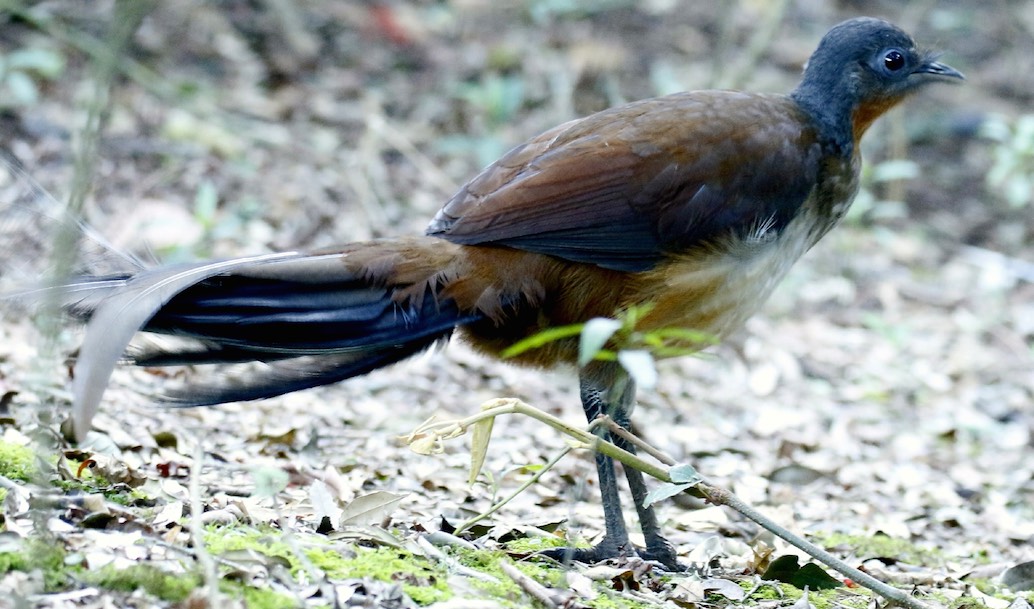Contributed by Joy Window, Member, Big Scrub Landcare.
In the rainforest, the calls of unseen birds echo eerily through the treetops. Closer to the ground, you might hear the odd chortles and whirrs of the Alberts lyrebird (Menura alberti), found only in south-east Queensland and northern New South Wales – for instance, in the former Big Scrub area of the Nightcap National Park. Like its better known relative, the superb lyrebird, it has its own unique call but can also mimic other bird calls, such as those of catbirds, satin bowerbirds, whipbirds and rosellas.
If you are lucky enough to see one – they are pretty shy – you’ll be able to tell the male from the female by the tail. The male’s has the titular lyre shape while the female has a shorter tail, with the feathers closer together. In the breeding season (winter), he displays by folding his tail over his head and body and ‘shivering’ it, all the while calling loudly, for hours during the day. This is done on a piece of ground he cleans flat or on vines near the ground as opposed to the mound that superb lyrebirds predominately use. The male will protect his territory (which can be up to 15 hectares) in the breeding season. The birds are sedentary – they stay in the same territory year-round.
Even after all this effort, there doesn’t appear to be a lasting pair bond. The female alone builds the nest, which is dome-shaped with a side entrance. It is constructed of bark, moss, palm leaf pieces, fern fronds and sticks, and may be lined with more moss, fine plant material and feathers. The nest can take three weeks to make and looks like part of the debris on the rainforest floor, so can be hard to identify.
A single egg is laid from May to mid-August. The female incubates this and broods and feeds the chick without help. The chick will fledge when it is about five and a half weeks old.
The longest-lived bird on record is a male that was thought to have lived to 22 years of age. It maintained a territory in Lamington National Park, Queensland, for at least 15 years.
Albert’s lyrebird scratches up leaf litter looking for insects (like beetles) and their larvae. Because they are so hard to see and track, not much is known about the details of their lifestyle, so if you do see one, it might be a good idea to take notes in case your observations are scientifically valuable. Have fun being a citizen scientist!


